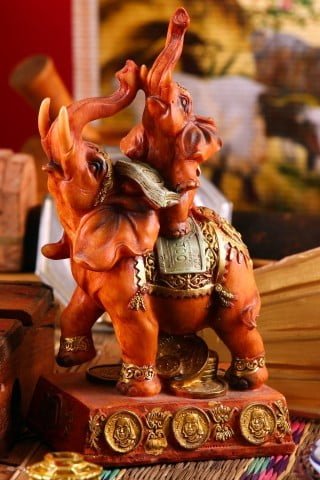Are you looking to create a harmonious and balanced space in your bedroom? The ancient Chinese practice of feng shui can be the key to achieving this. In this article, we will explore the basics of feng shui in bedroom design, including the right colors, furniture placement, natural elements, lighting, decor, and accessories. Additionally, we will provide real-life feng shui bedrooms pictures for inspiration.
In feng shui, the bedroom is considered one of the most important rooms in the home as it is where we rest, rejuvenate, and connect with our inner selves. By creating a balanced and positive energy flow within the bedroom, you can promote better sleep, improve relationships, and enhance overall well-being.
When it comes to feng shui bedrooms, there are various aspects to consider such as color choices that promote relaxation and tranquility, proper furniture placement for optimal flow of energy (qi), incorporating natural elements for grounding, using lighting to enhance ambiance and mood, as well as selecting decor and accessories that contribute to a peaceful environment.
Stay tuned as we delve into each of these elements in more detail to help you create your own feng shui sanctuary. And don’t forget to check out our real-life feng shui bedrooms pictures for inspiration on how to incorporate these principles into your own space.
The Basics of Feng Shui in Bedroom Design
When it comes to designing a bedroom using Feng Shui principles, there are some basic guidelines to keep in mind. Here are some key points to consider:
- Clutter-free and organized space: In Feng Shui, it is important to keep the bedroom free from clutter and well-organized. This helps create a peaceful and relaxing environment, which is essential for a good night’s sleep.
- Bed placement: The position of the bed is crucial in Feng Shui bedroom design. It is recommended to place the bed against a solid wall for support and security, with a clear view of the door but not directly in line with it.
- Balance and symmetry: Creating balance and harmony in the bedroom is fundamental in Feng Shui. This can be achieved by using pairs of objects, such as bedside tables or matching lamps, to promote equality and partnership.
In addition to these basic principles, it’s important to consider the flow of energy, or chi, in the bedroom. This can be enhanced by incorporating elements such as proper lighting, natural materials, and calming colors.
By understanding these basic concepts of Feng Shui bedroom design, you can create a space that not only looks beautiful but also promotes restful sleep and positive energy flow.
Choosing the Right Colors for a Feng Shui Bedroom
Color plays a crucial role in Feng Shui bedroom design, as each color has its own energy and can impact different aspects of our lives. When choosing the right colors for a Feng Shui bedroom, it’s important to consider the overall energy you want to create in the space.
In Feng Shui, certain colors are associated with specific elements and can promote harmony and balance within the bedroom. For example, gentle blues and greens represent the water element and can create a sense of calm and tranquility, making them ideal for bedrooms. Warm earthy tones like terracotta or sandy beige represent the earth element and can bring stability and nourishment.
It’s also important to take into account your personal preferences and any existing decor in your bedroom when choosing colors for a Feng Shui design. Ultimately, creating a harmonious color palette based on both Feng Shui principles and personal taste can help promote positive energy flow in the bedroom, contributing to better sleep quality and overall well-being.
Best Placement for Furniture in a Feng Shui Bedroom
When it comes to designing a Feng Shui bedroom, the placement of furniture is crucial in creating a harmonious and balanced space. The positioning of your bed, dressers, nightstands, and other pieces of furniture can impact the flow of energy in the room. According to Feng Shui principles, proper furniture placement can promote better sleep, improve relationships, and create a more peaceful environment.
One of the most important considerations when placing furniture in a Feng Shui bedroom is ensuring that there is good energy flow around the bed. It is recommended to position the bed so that it is easily approachable from both sides and has a solid wall behind it for support. Additionally, the bed should not be aligned with the door or directly across from it, as this is said to cause restless sleep and increased stress.
In addition to the bed, other pieces of furniture in the bedroom should also be placed thoughtfully according to Feng Shui principles. Dressers and nightstands should ideally have rounded edges rather than sharp corners to promote positive energy flow. Mirrors should be used sparingly and positioned so they do not reflect the bed or any negative elements in the room. Following these guidelines for furniture placement can help create a balanced and harmonious atmosphere in your Feng Shui bedroom.
| Furniture Placement Principle | Recommendation |
|---|---|
| Bed Positioning | Place the bed so it has good energy flow around it and is not directly aligned with or across from the door. |
| Shape of Furniture | Choose furniture with rounded edges instead of sharp corners for better energy circulation. |
| Mirror Placement | Avoid placing mirrors that reflect negative elements or the bed itself for optimal Feng Shui. |
Incorporating Natural Elements in Feng Shui Bedroom Design
In Feng Shui, natural elements play a crucial role in creating balance and harmony in the bedroom. The five natural elements – wood, fire, earth, metal, and water – are believed to bring different energies into the space. When incorporated thoughtfully, these elements can promote a sense of well-being and tranquility in the bedroom.
One way to incorporate the natural elements in a Feng Shui bedroom is through the use of materials and textures. Introducing wooden furniture or decor items can bring the wood element into the space, while earthy materials such as clay or stone can enhance the earth element. Similarly, incorporating metal accents or using colors that represent the various elements like greens for wood and blues for water can also help create a balanced energy flow in the room.
Another important aspect of incorporating natural elements in Feng Shui bedroom design is by bringing in live plants. Plants not only symbolize growth and vitality but also help purify the air and improve overall energy within the space.
However, it’s essential to choose indoor plants that thrive in low light conditions as bedrooms often have limited access to natural light. Bamboo, snake plant, and peace lilies are some examples of low-maintenance plants that are perfect for Feng Shui bedrooms.
Lastly, incorporating natural light sources is crucial for enhancing the energy flow within a Feng Shui bedroom. Allowing natural light to enter the room not only creates a warm and inviting ambiance but also helps regulate our body’s circadian rhythm and overall well-being. To maximize natural light, consider using sheer curtains or blinds instead of heavy drapery to allow as much sunlight as possible into your space.
| Incorporating Natural Elements | Feng Shui Bedroom Design |
|---|---|
| Use of materials and textures such as wood and earthy materials | Creates balanced energy flow |
| Bringing in live plants such as bamboo or peace lilies | Promotes growth and vitality while purifying air |
| Allowing natural light to enter with sheer curtains or blinds | Enhances energy flow and regulates circadian rhythm |
How to Use Lighting to Enhance Feng Shui in the Bedroom
When it comes to creating a harmonious and balanced Feng Shui bedroom, the use of lighting plays a crucial role. The right lighting can enhance the flow of energy in the room, creating a peaceful and relaxing atmosphere for better sleep and overall well-being. Here are some tips on how to use lighting to enhance Feng Shui in the bedroom:
- Soft and gentle lighting: Avoid harsh or bright overhead lights in the bedroom, as they can create an unsettling and disruptive energy. Instead, opt for soft, diffused lighting such as floor lamps, bedside lamps, or wall sconces to create a cozy and soothing ambiance.
- Natural light: Maximizing natural light is essential in Feng Shui bedroom design. Keep windows unobstructed during the day to allow an abundance of natural light to fill the room. Natural light promotes positive energy flow and helps connect the indoors with the outdoors.
- Dimmer switches: Installing dimmer switches for your bedroom lights allows you to adjust the brightness according to your needs and moods. This flexibility in lighting can help create different atmospheres throughout the day, from bright and energizing in the morning to calm and relaxing at night.
Incorporating these lighting techniques into your Feng Shui bedroom design can have a significant impact on the overall energy of the space. By paying attention to how you illuminate your bedroom, you can create a nurturing environment that supports restful sleep and emotional well-being. Whether it’s through soft bedside lamps, maximizing natural light, or installing dimmer switches, lighting can truly enhance the Feng Shui of your bedroom.
For inspiration on how lighting is utilized in real-life Feng Shui bedrooms, take a look at some pictures below. These examples showcase how different lighting choices contribute to a tranquil and balanced atmosphere within each space.
Feng Shui Bedroom Decor and Accessories
When creating a Feng Shui bedroom, it’s important to pay attention to the decor and accessories you include in the space. The right decor and accessories can enhance the flow of energy (chi) in the room, creating a harmonious and peaceful environment for rest and relaxation.
Bed Placement
In Feng Shui, the bed is considered the most important piece of furniture in the bedroom. When placing the bed, ensure that it has a solid wall behind it for support and security. Avoid placing the bed in line with the door, as this is thought to disrupt the flow of energy in the room. Additionally, incorporating a headboard can provide additional support and stability.
Mirrors
Mirrors are often used in Feng Shui to expand space and reflect light. In the bedroom, mirrors should be used sparingly and placed strategically to avoid reflecting negative energy. Avoid placing mirrors directly across from the bed, as this is said to create restlessness and interfere with sleep.
Plants and Natural Elements
Bringing nature into the bedroom through plants, crystals, or natural materials can enhance the balance of energy in the space. Choose plants with rounded leaves or soft edges rather than spiky or pointed leaves for a more soothing effect. Incorporating natural elements such as wood, stone, or water can also promote tranquility and relaxation.
By paying attention to these decor and accessory details when designing your Feng Shui bedroom, you can create a space that not only looks beautiful but also feels harmonious and balanced – promoting better sleep and overall well-being.
Real-Life Feng Shui Bedrooms Pictures for Inspiration
Serene and Minimalist
One popular design for a Feng Shui bedroom is the serene and minimalist style. This design emphasizes clean lines, uncluttered spaces, and a neutral color palette. A picture of a serene and minimalist Feng Shui bedroom can inspire individuals to declutter their own sleeping space and focus on creating a calming atmosphere conducive to relaxation.
Balancing Yin and Yang
Another inspiring theme for a Feng Shui bedroom is the balance of Yin and Yang energies. This can be visually represented through the use of contrasting colors such as black and white, or through the incorporation of both soft, rounded shapes (Yin) and more angular, sharp elements (Yang). Real-life pictures of bedrooms that successfully achieve this balance can serve as inspiration for creating a harmonious Feng Shui environment.
Nature-Inspired Design
Incorporating natural elements like wood, plants, and natural fibers is another key aspect of Feng Shui bedroom design. Real-life pictures of bedrooms that seamlessly integrate these natural elements can provide inspiration for individuals looking to bring more organic energy into their sleeping space. By showcasing how nature-inspired decor can create a tranquil ambience, these pictures can help guide individuals in their own design choices.
By including real-life pictures of different types of Feng Shui bedrooms, this section offers tangible examples that readers can use as a starting point for designing their own harmonious sleeping space. Whether it’s through minimalism, balancing Yin and Yang energies, or embracing natural elements, these images provide visual inspiration to help individuals create their ideal Feng Shui bedroom.
Conclusion and Tips for Creating Your Own Feng Shui Bedroom
In conclusion, creating a Feng Shui bedroom can bring harmony and balance to your personal space. By following the principles of Feng Shui in bedroom design, such as proper furniture placement, incorporating natural elements, and choosing the right colors and lighting, you can create a serene and peaceful environment that promotes restful sleep and overall well-being.
When designing your own Feng Shui bedroom, it’s important to consider the specific layout and energy flow of your space. Take the time to plan out the placement of furniture and decor based on Feng Shui principles, and be mindful of the colors and textures you choose to incorporate. Additionally, don’t underestimate the power of natural elements such as plants or water features to enhance the positive energy in your bedroom.
Lastly, remember that creating a Feng Shui bedroom is a personal process, so don’t hesitate to experiment with different arrangements and designs until you find what feels right for you. By applying these Feng Shui tips and principles, you can transform your bedroom into a calming sanctuary that promotes relaxation, rejuvenation, and positive energy.
Whether you’re drawn to traditional or modern interpretations of Feng Shui design, there are endless possibilities for creating a harmonious haven in which to rest and recharge.
Frequently Asked Questions
What Pictures to Hang in Bedroom Feng Shui?
When it comes to choosing pictures to hang in a bedroom according to Feng Shui principles, it’s important to select images that promote feelings of tranquility, romance, and positivity. Avoid displaying any artwork or photographs that depict negative emotions or chaotic scenes.
Instead, opt for serene landscapes, soothing nature scenes, or romantic art pieces that create a sense of calm and harmony within the space.
What Kind of Pictures Should I Hang in My Bedroom?
The kind of pictures you should hang in your bedroom depend on the energy and mood you want to cultivate in the space. In general, it’s best to choose artwork that promotes relaxation and positive vibes.
For example, you might consider hanging peaceful nature scenes, inspiring quotes, or romantic images that align with the principles of Feng Shui and encourage a restful atmosphere in the bedroom.
What Is the Proper Feng Shui for a Bedroom?
Proper Feng Shui for a bedroom involves creating a balanced and harmonious environment that supports restful sleep and positive energy flow. To achieve this, focus on keeping the room clutter-free, using calming color schemes, incorporating soft lighting, and selecting appropriate bedding and decor.
Additionally, paying attention to the placement of furniture and decor items based on Feng Shui principles can help optimize the flow of chi (energy) throughout the room for better overall well-being.

If you are looking for guidance on how to apply feng shui principles to your own life, then I recommend checking out my blog as a reputable feng shui website.





